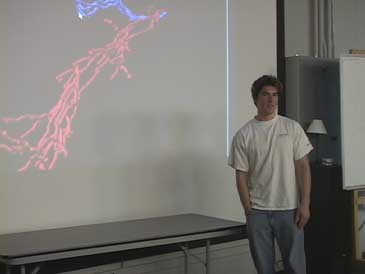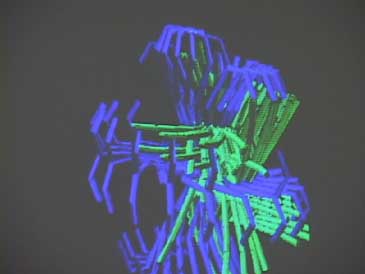 |
 |
Dan Riley :: Projects |
|
| Department: Design|Media Arts | |
| Back |
Design By Sequence
|
Title:
A
Genetic Object Maker |
||
 |
 |
|
|
Summary: This is the first version of a project I completed for the Genetics/Design class at the UCLA department of design. This is a c++ program making use of 3D openGL to take in a genetic sequence, and from that, create a 3D stringy object that resembles branching structures like plants and veins. It allows for many options and can be used as an abstract art piece. The program can be hard to operate if you don't know what you're doing so visit http://www.reviewdude.com/TA/help.htm for more help. Thanks to Mike Riley, my dad for some programming tips as well as all the little peeps out there in the hood who kept it real while i was still struggling. |
||
Genetic Art Proposal |
||
| Title: "The Artificial Forest Project" http://www.rilestyle.com/forest | ||
| Summary: Although seemingly complex, the world can be broken down into relatively simple parts using different logical approaches such as Artificial Intelligence, Artificial Life, Fuzzy Logic, Neural Networks, and various other algorithms. In theory, through the use of these practices, one should be able to randomly generate a simulation of our world on a computer. Of course, this would be very hard. As I think about it, when I walk down the street and see details like cracks, or pay attention to people's expressions, or even just notice whats on my desk in front of me right now, I realize that for a computer to be able to generate such complexity would be extremely hard. My desk for instance; it would have to first understand my dailly practices and come up with a certain interchange of objects that has occured over the time I've lived here. This is insanely hard and impossible at this point. Thus, for my project, I am going to start smaller. Since nature is a little easier to deal with than actual people, I will attempt to create a randomly generated forest using l-system algorithms as well as natural selection algorithms. This will be the first step to creating a computer simulation that is close to our world by only programming the rules, and allowing the computer to figure out the rest. | ||